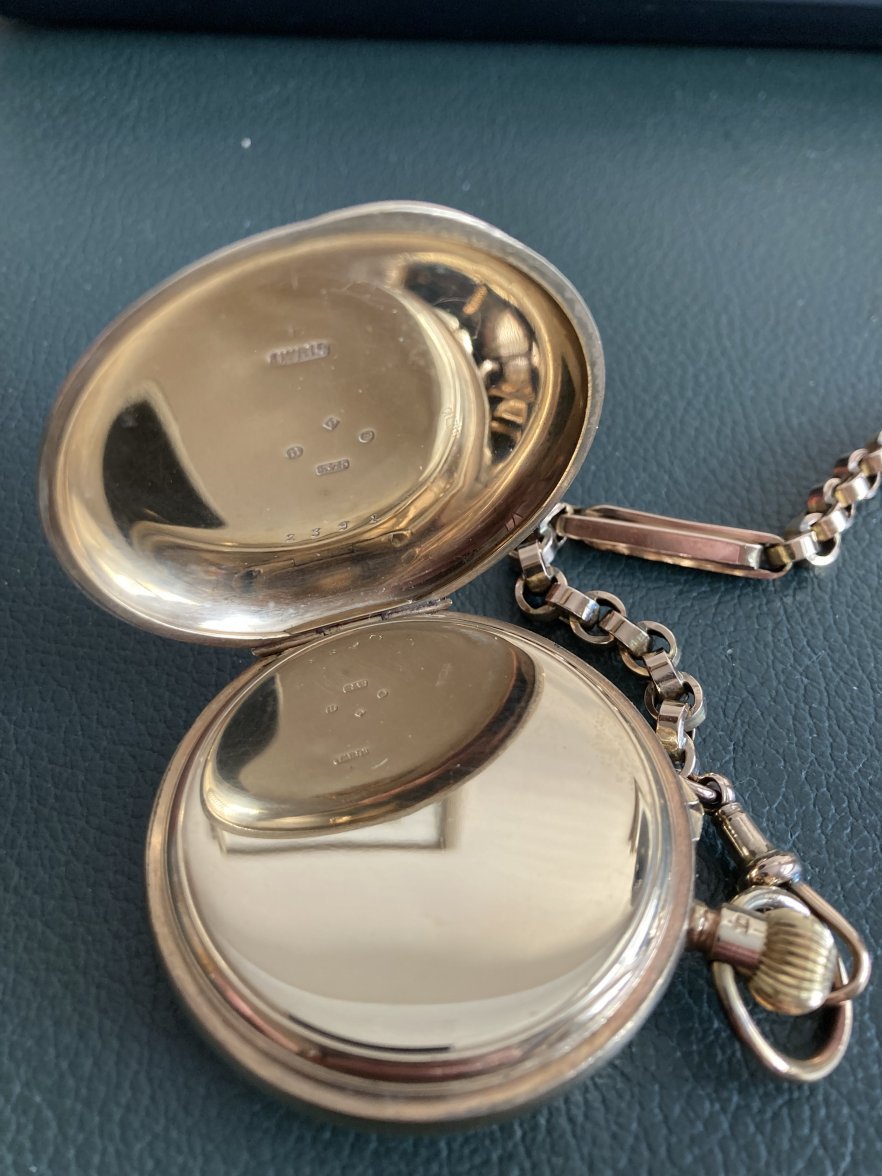S.H.
·I don't wear pocket watches but I don't like to see them condemned to the trash because someone wants to melt their gold case... so I sometimes buy them just to save them. Sure enough, this week the price of gold spiked and a heavy JW Benson ended up in my lap. I could have bought a really cool Omega with this, gold is through the roof 😲 and this thing is heavy. Did I mention it is heavy?
I'm French so I'm not familiar with those: I just learned a few things on the internet, I'm not 100% sure. 📖 First, some pictures :
Also, the London Assay hallmarks (an owl has also been punched elsewhere in a few places by the French authorities, indicating gold of foreign provenance):
This watch is like a Rolls Royce, big, obsolete, expensive but still working after a hundred years...
Here is what I think I understand:
- this is a British made JW Benson "Ludgate" keyless movement, not particularly high end (partially jewelled, flat hairspring). a bit strange in such a well made full 18k gold case
- the movement is engraved "To H. M. the Queen" which points to a production date before 1901. Afterwards it was worded differently, or not marked at all.
- the date letter is a gothic small "c" which for the London assay (leopards head) indicates 1918-1919. The case bears the maker's mark JWB so it is not aftermarket / custom. Numbers on case and movement are the same.
I have found a similar mismatch here : https://oxfordpocketwatches.blogspot.com/2014/12/jw-benson-ludgate.html
😕
Why such a mismatch in the date, at least 20 years apart? Did I misread or misunderstood something? Because it does look strange to me to use such a movement, after letting it sit on a shelf for 20 years, in a full gold case, which should have been eye-wateringly expensive just after WWI?
I'm French so I'm not familiar with those: I just learned a few things on the internet, I'm not 100% sure. 📖 First, some pictures :
Also, the London Assay hallmarks (an owl has also been punched elsewhere in a few places by the French authorities, indicating gold of foreign provenance):
This watch is like a Rolls Royce, big, obsolete, expensive but still working after a hundred years...
Here is what I think I understand:
- this is a British made JW Benson "Ludgate" keyless movement, not particularly high end (partially jewelled, flat hairspring). a bit strange in such a well made full 18k gold case
- the movement is engraved "To H. M. the Queen" which points to a production date before 1901. Afterwards it was worded differently, or not marked at all.
- the date letter is a gothic small "c" which for the London assay (leopards head) indicates 1918-1919. The case bears the maker's mark JWB so it is not aftermarket / custom. Numbers on case and movement are the same.
I have found a similar mismatch here : https://oxfordpocketwatches.blogspot.com/2014/12/jw-benson-ludgate.html
😕
Why such a mismatch in the date, at least 20 years apart? Did I misread or misunderstood something? Because it does look strange to me to use such a movement, after letting it sit on a shelf for 20 years, in a full gold case, which should have been eye-wateringly expensive just after WWI?
Edited:







